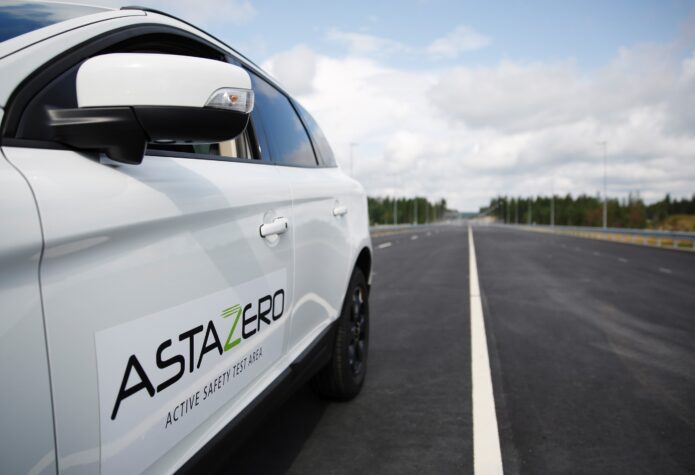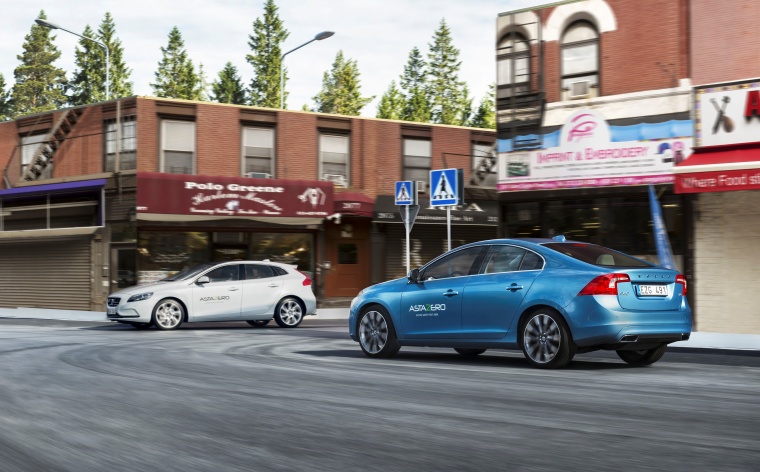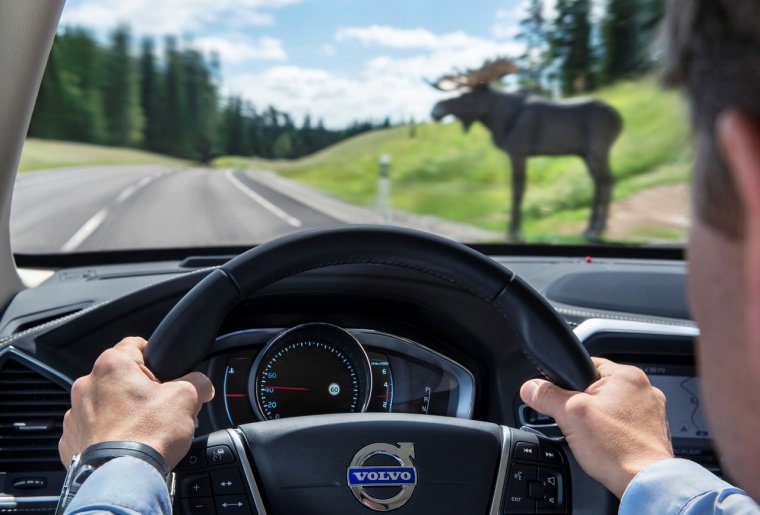AstaZero: Self-driving cars coming soon

If you mainly associate self-driving vehicles with the car from Knight Rider, then think again. The advanced safety systems that are being tested at the AstaZero proving ground in Borås, Sweden, are preparing tomorrow’s transport system – and might bring intelligent cars to the streets a lot sooner than expected.
Sweden is one of the global pioneers of automobile safety. In 2014, the world’s first full-scale test facility specialised in developing advanced safety systems opened its doors in Borås, near Gothenburg. The investment was co-financed with a SEK 260 million loan from NIB.
Covering an area of 380 hectares, the testing ground is larger than Monaco. The name is a combination of the acronym for “Active Safety Testing Area” and “Zero”, which refers to the Swedish Parliament’s vision of zero deaths and severe injuries in traffic-related accidents.
“AstaZero makes the development of new life-saving active safety functions possible. Having access to a specialised proving ground allows researchers to test these functions in a safe environment, which helps to significantly accelerate the pace of innovation”, explains Mr Peter Janevik, Chief Technology Officer at AstaZero.
In contrast to passive safety features that provide protection after a collision has already occurred, like seatbelts and airbags, active safety is about avoiding crashes and other incidents before they happen.
The research conducted at AstaZero couldn’t be timelier. Every year, some 1.3 million people globally die in road traffic incidents. An additional 20-50 million sustain non-fatal injuries.
The site is brand-independent, and it can be booked by automakers and researchers alike.
“The prime users of the ground are, of course, our industrial partners, which include Volvo Cars and Scania, and research programmes funded by the Swedish innovation agency Vinnova, but the site is open to other organisations and companies,” Mr Janevik confirms. “These customers are based both in Sweden and abroad.”
AstaZero has a “rural road” that loops around the entire testing ground, a “city area”, a high-speed track and a multilane road. These different environments allow automakers and researchers to simulate almost any conceivable traffic and accident situation.

The urban environment is modelled after Harlem. Image: Volvo Cars.
Swedish Harlem and country roads
In order to create a realistic experience of city driving, the scenery designers at AstaZero got creative and modelled the urban setting at the site after New York’s Harlem neighbourhood.
“Harlem was chosen as the model for the city area because it has a vibrant and lively feel, which is important to make people feel comfortable while being there”, Mr Janevik explains the design choice.
The city area has dummies simulating pedestrians and cyclists that appear from behind buildings, so the cars’ safety system has to be able to detect potential dangers with little warning and respond quickly.
“The walls of the buildings block radar waves, LIDAR scans or light in a specific way. This can, for example, assist in the development of faster-acting systems that can manage the complex scenarios of city driving”, he continues.
The urban test bed is linked to the rural road. At a length of 5.7 kilometres, the track ventures into the forests surrounding the site and is mainly designed to simulate steady-state driving. There are small side roads that hold obstacles though, and an artificial, remote controlled moose will even appear for wildlife evasion tests.

Wildlife evasion testing with artificial moose. Image: Volvo Cars.
Driverless in 3D
While a lot of research is still needed to make systems sufficiently safe and reliable, active safety technology is a crucial step towards the development of self-driving cars.
“When progressing from active safety to automated driving, the amount of research needed will increase exponentially. AstaZero is one of the few places in the world where research on important aspects of self-driving vehicles can be carried out in a reproducible test environment”, Mr Janveik explains.
Some of the testing at the site can be standardised, but most test scenarios need to be conducted first in AstaZero’s 3D virtual environment.
“Our 3D model can be used, among other things, for test planning, driving and vehicle simulations. Virtual scenarios can be carried out much faster than real-life testing, which increases the number of tests that can be conducted within the timeframe of a project significantly.”
Self-driving cars for sustainability
Automated driving technology is also expected to support the development of more energy-efficient modes of transport, such as electrified roads and environmental road trains.
“The transport system of tomorrow has to have three crucial features: it has to be safe, it has to be socially acceptable, and it has to be environmentally sustainable”, Mr. Janevik explains. “Active safety systems are already contributing to this by reducing accidents and energy use, and helping to improve traffic flows.”
“I believe that automated vehicles are needed to establish environmentally friendly transportation”, he continues. “Supporting the development of sustainable traffic systems is part of AstaZero’s mission.”
Active safety technology has the potential to significantly change how we think about and plan transportation, and therefore has a broader impact on society. As the first of its kind, AstaZero has laid the foundation for test environments preparing the traffic system of the future.

